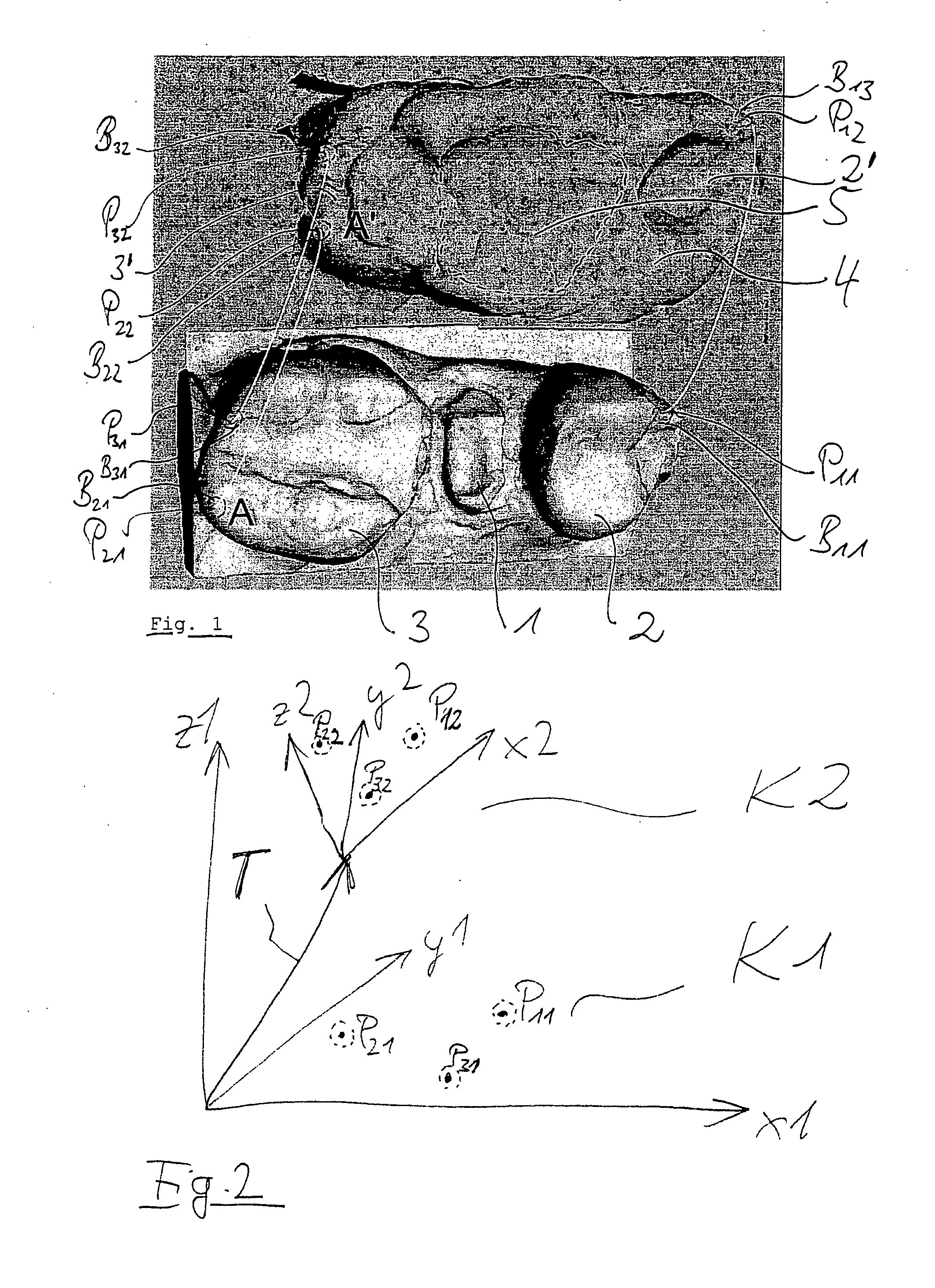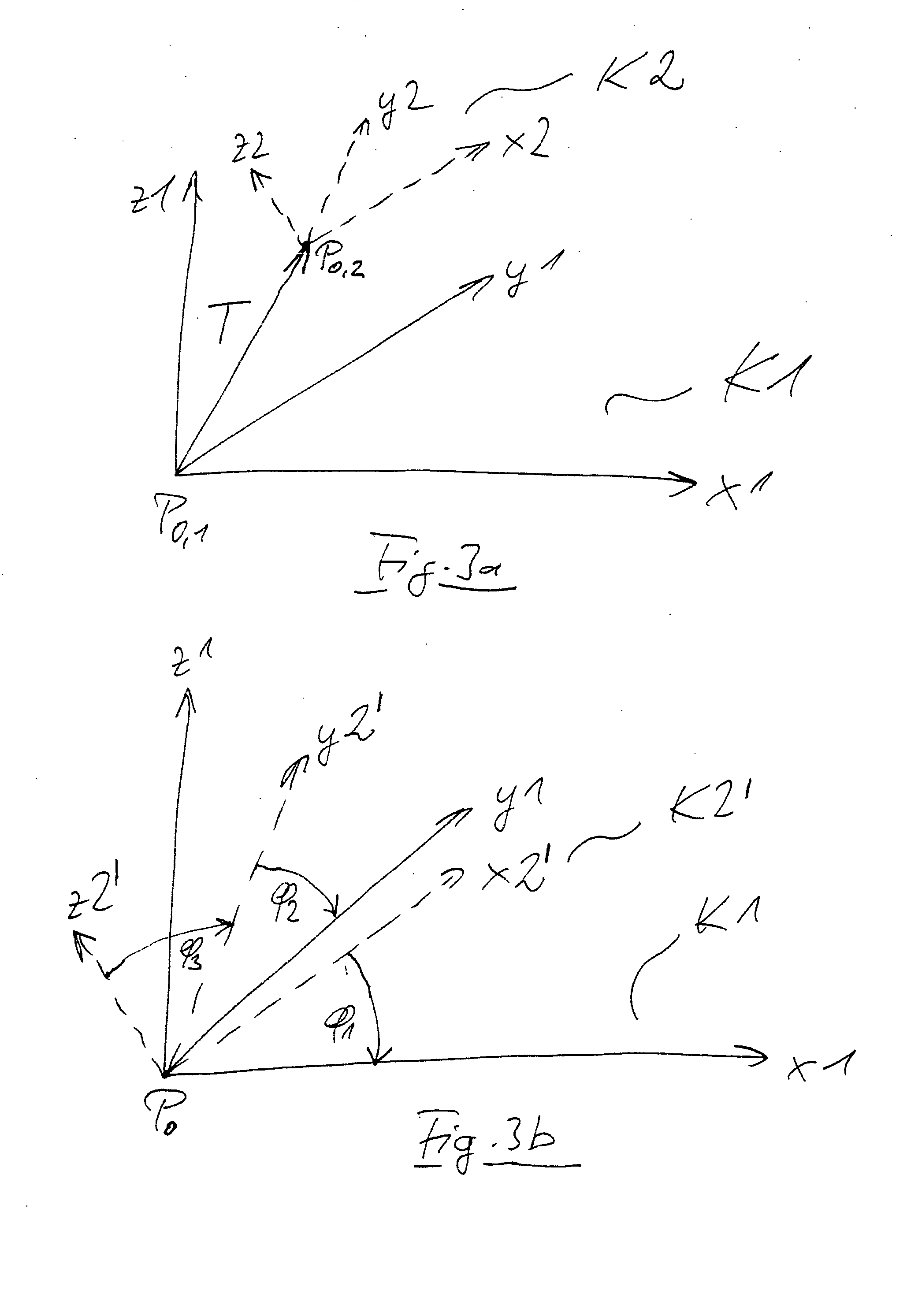Method for obtaining a position match of 3D data sets in a dental CAD/CAM system
a technology of 3d data and camera system, which is applied in image data processing, medical science, dentistry, etc., can solve the problems of poor scan quality and automatic process failur
- Summary
- Abstract
- Description
- Claims
- Application Information
AI Technical Summary
Benefits of technology
Problems solved by technology
Method used
Image
Examples
Embodiment Construction
[0036] Two 3D models A and A′ are shown in FIG. 1. The 3D model A is a digital representation of a prepared tooth 1 with its adjacent teeth 2, 3. The 3D model A′ is a data representation in approximately the same preparation site, wherein, however, an impression 5 of the opposite jaw is contained in an impression compound 4 and wherein the adjacent teeth 2′, 3′ are predominately covered by the impression compound 4. Parts of the impression 5 should be taken into account when designing a dental prosthetic item, in this case the chewing surface in said impression 5. Up to this point, the two 3D models A, A′ do not yet have any spatial relationship to each other. By comparing distinctive surface points or regions, one can see with the naked eye that there are surface points or regions on the surface that correspond to each other in the two models. In particular, the surfaces are edges or crests.
[0037] Both of the 3D models A, A′ are represented at the same degree of magnification and ...
PUM
 Login to View More
Login to View More Abstract
Description
Claims
Application Information
 Login to View More
Login to View More - R&D
- Intellectual Property
- Life Sciences
- Materials
- Tech Scout
- Unparalleled Data Quality
- Higher Quality Content
- 60% Fewer Hallucinations
Browse by: Latest US Patents, China's latest patents, Technical Efficacy Thesaurus, Application Domain, Technology Topic, Popular Technical Reports.
© 2025 PatSnap. All rights reserved.Legal|Privacy policy|Modern Slavery Act Transparency Statement|Sitemap|About US| Contact US: help@patsnap.com



